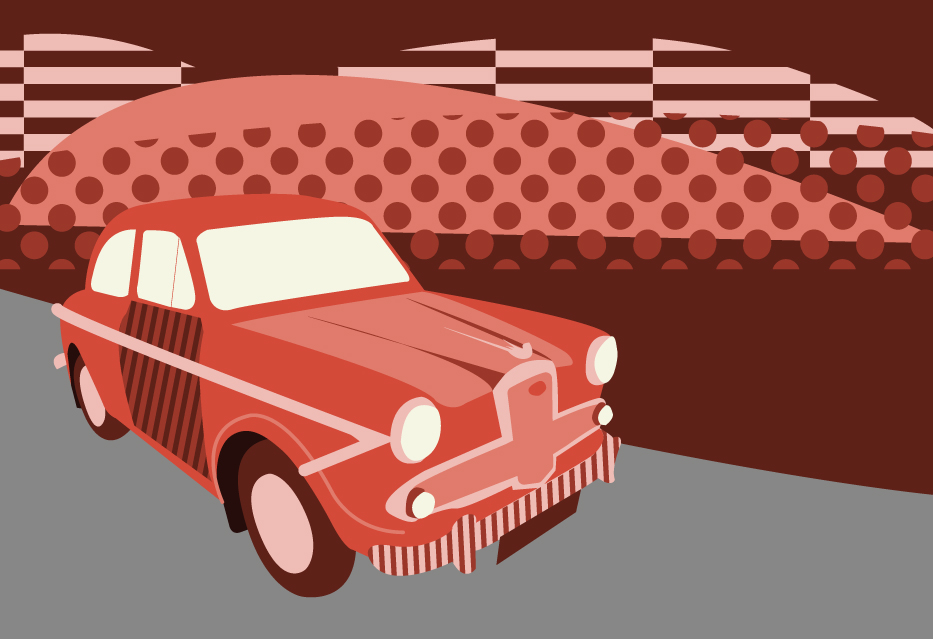The Triumph Herald was a car that nearly didn’t get built at all. Manufacturer Standard-Triumph was stuck for a car body supplier to provide the shell for the new car’s unitary construction.
And but for chief engineer Harry Webster’s decision to attach individual panels to the chassis, the ultimately popular Herald may never have seen the light of day.
We take a look at the car that spawned the Spitfire and the GT6.
The year 1959 was a memorable one for the British motor industry. As well as seeing the birth of the Herald, it spawned the Mini and the Ford Anglia.
While the Mini went on to attain legendary status, the Herald’s 12-year production run, including developments including the sporty and eye-catching Vitesse, ensured the Michelotti-bodied car its own place in history.
The Herald marked a radical design change from the company’s Standard 8 and 10 models, which were fairly mundane – even standard – 1950s motoring fare.
Unhappy with the in-house designs put forward, Standard-Triumph opted to work with Italian stylist Michelloti, who came up with a car bristling with angles and sharp edges not dissimilar to the principal ideas behind the competing Anglia.
The Triumph marque, which was gaining traction as a brand at the time, was used on the new car to make a break from the previous models.
The real problem, however, was getting the car built in an era with limited manufacturing capacity for steel bodies.
With Standard-Triumph’s usual suppliers Fisher & Ludlow being taken over by rivals BMC, no body manufacturing facility themselves and no capacity in a crowded market, the only solution was to bolt panels made by a selection of smaller companies on to a separate chassis.
This was against the trend for monocoque construction, but has one distinct advantage today – anyone looking to restore a Herald can simply unbolt the panels in their garage, assess the rot (there will almost certainly be some!) and get to work. It also made different body styles easy to introduce as new panels could simply be bolted on to the same chassis.
This did, however, give the car something of a scruffy look – even tidy examples somehow look like they’ve been bolted together, with some uneven panel fit almost inevitable…
Initially, the Herald – named after company boss Alick Dick’s yacht – was powered by the four cyclinder 948cc unit used in the Standard Pennant.
These early cars used much of the running gear from the Standard 8 and 10, though its independent suspension was a first for a volume production car and its rack and pinion steering gave it an incredible 22ft turning circle.
Adrian Flux Classic Car Insurance
MotorSport magazine called it “Britain’s first truly-advanced small car to be introduced since the war”, and praised its “many safety features and outstanding road-holding, steering and cornering”, declaring it “way out ahead of all other small cars at present being made in this country”.
They predicted that “the Triumph Herald is one of the world’s outstandingly interesting motor cars and may well embarrass its sponsors by the enormous flood of orders they can expect to receive for it”.
Performance was sluggish, however, with a top speed of just over 70mph and 0-60mph took more than 30 seconds. This, allied to poor build quality and a relatively high price (about £700), actually saw sales get off to a slow start.
A four-seater convertible was introduced in 1960, with a twin-carb version of the 948cc engine providing some useful extra power – but still not enough to put your hair too much at risk from the wind.
The company was in trouble, and was itself swallowed up by the giant – and ultimately doomed – Leyland Motors in 1961. However, this was probably the best thing to happen to the Herald, as money and resources were finally available to turn the car into the sales success it became.
The car was relaunched as the Herald 1200, with an uprated 1147cc engine producing 40bhp and a top speed of 75mph. Build quality also improved, as did the quality of the seats and dashboard, and sales began to improve markedly.
The Bristol Illustrated News road-tested a 1200 convertible in 1961 and said that, compared to the 948cc predecessor, acceleration was “100% improved”. That may have been going a bit far, but the £700 car also drew praise for its interior (“this type of luxury is normally reserved for the much higher priced models”) and its “extremely attractive” styling.
Indeed, the test ended with a ringing endorsement for both the Herald and its maker: “This new Herald ‘1200’ which is, incidentally, available in Saloon, Coupe, and Convertible versions, is an extremely fine motor car. It is very reasonably priced, well built, attractively styled and is going to keep the Triumph flag flying high for many years to come.”
This “something for everyone” approach – there was also an estate – gave the Herald a comprehensive model range and the chassis also gave birth to the phenomenally successful Spitfire in 1962.
Along with the Spitfire came the first truly sporting Herald, the Vitesse 6, distinguished by its slanted, aggressive looking twin headlamps.


Powered by a new six-cylinder 1600cc engine, top speed was now up to 89mph, with front disc brakes as standard, beefed up body strength and comparatively lavish interior.
The Vitesse was available as a saloon or convertible, with the four-seater soft top a unique offering in the marketplace – family open top motoring with performance a match for many sports cars proved a winning combination for Triumph.
Meanwhile, developments to the Herald continued alongside the up-market Vitesse, with the 12/50 and then the 13/60 seeing further performance boosts with output peaking at 61bhp with a top speed of just over 80mph.
There were no such performance restrictions placed on the Vitesse, which gained the twin-carb 2-litre straight six engine being used in the 2000 saloon and GT6 in 1966, producing 95bhp and propelling the car to a heady 95mph.
The final Herald incarnation was the Vitesse Mk2, the last and best of the line launched in October 1968, featuring improved rear suspension to address the tail-happy rear end caused by the extra power.
This last engine upgrade saw the one and only Herald to hit 100mph, with 0-60mph reached in just 11 seconds – still swift enough to keep up with most cars on the road today and comparable with an MGB sports car, but with four seats and a large boot.
There was a new grille for the ultimate Vitesse, Rostyle wheel trims and a silver painted steel rear panel together with another upgraded interior.
Like our illustration of the Triumph Herald at the beginning of the article?
Download a free high-quality poster version here.
Despite all the improvements, however, it was clear that this was now an old model at a time when car production was making giant strides. As MotorSport said in its review of the last Vitesse: “I quite liked this compact 2-litre, but this did not overcome the impression that it has been on the market for a long time and must be regarded as an interim model while the Triumph engineers get out something fresh for British Leyland to sell.”
A fair few after market modifications were available to give the Vitesse, which competed in the Monte Carlo Rally in the early 60s and Trans-Am in 1971, even more power and better handling, including alloy manifolds and suspension packs.
Some were even fitted with the 150bhp 2.5-litre engine from the TR5/6 and 2.5PI, though the original gearbox could not always cope…
The Herald was supposed to be replaced by the Triumph 1300, introduced in 1965, but its popularity ensured it outlived the 1300 by a year, and was eventually phased out in favour of the Toledo, itself succeeded by the popular Dolomite.
Heralds and the up-market Vitesse are now popular affordable classics, with later cars carrying a premium. Decent examples can be found for around £5,000, but expect to pay up to £10,000 to £12,000 for a Vitesse in excellent condition.
Insurance from Adrian Flux
Get competitive classic car insurance for the Herald and Vitesse with Adrian Flux.
Features can include:
- Agreed value
- Limited mileage discounts
- Owners club discount
- Laid up cover
- Wedding hire cover









